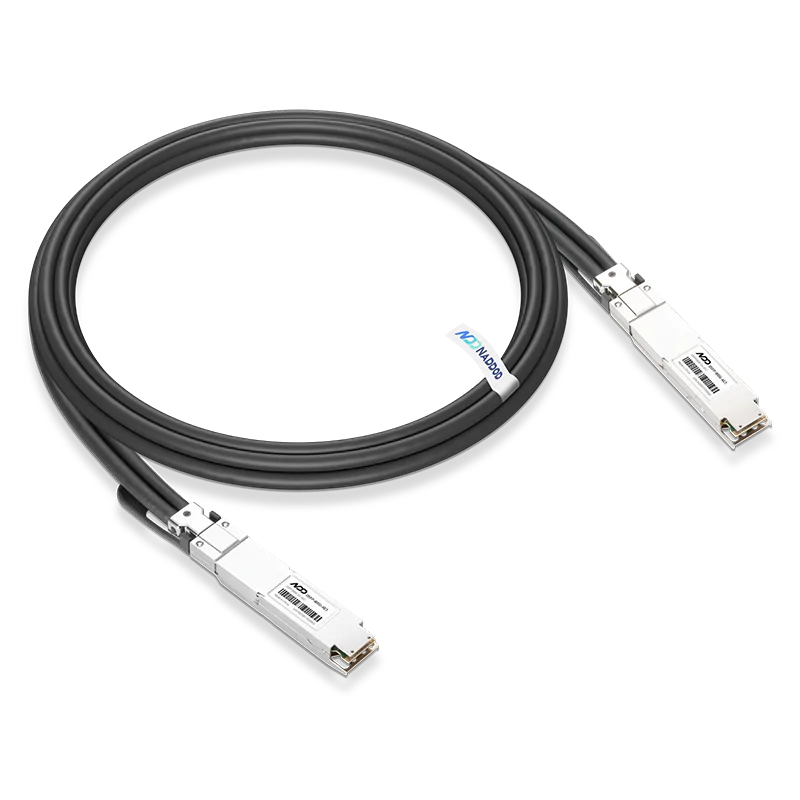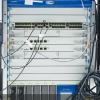Due to the fragility of optical fibers, optical fibers used in various environments must be processed into optical fiber cables with corresponding mechanical properties to ensure that the optical fibers are laid, installed, used and maintained in the process to ensure that they are not damaged by external forces to ensure the smooth flow of the network. And now a large number of outdoor fiber optic cable, indoor fiber optic cable in a complex environment does not give a fundamental guarantee in these properties. Based on this, people have developed and designed armored fiber optic cable.
What is Armored Fiber Optic Cable?
Armored fiber optic cable, as the name implies, is a kind of fiber optic cable with a protective “armor” wrapped around the outside, its armor is mainly used to protect the fiber optic cable from animal gnawing, moisture erosion or other damage.
Why Use Armored Fiber Optic Cable?
Previously, outdoor fiber optic cables were usually laid in strong ducts to protect them from external forces. However, this method of laying fiber optic cable is very complicated and can be costly in terms of time and labor. Therefore, some people designed to add a layer of metal armor to protect the core inside the fiber optic cable, which is also known as armored fiber optic cable. Armored fiber optic cable has the function of strong pressure and tensile resistance, can effectively adapt to the harsh outdoor environment, and the wiring is much more flexible than pipe wiring. Now, armored fiber optic cable has been widely used in the field of optical communication.
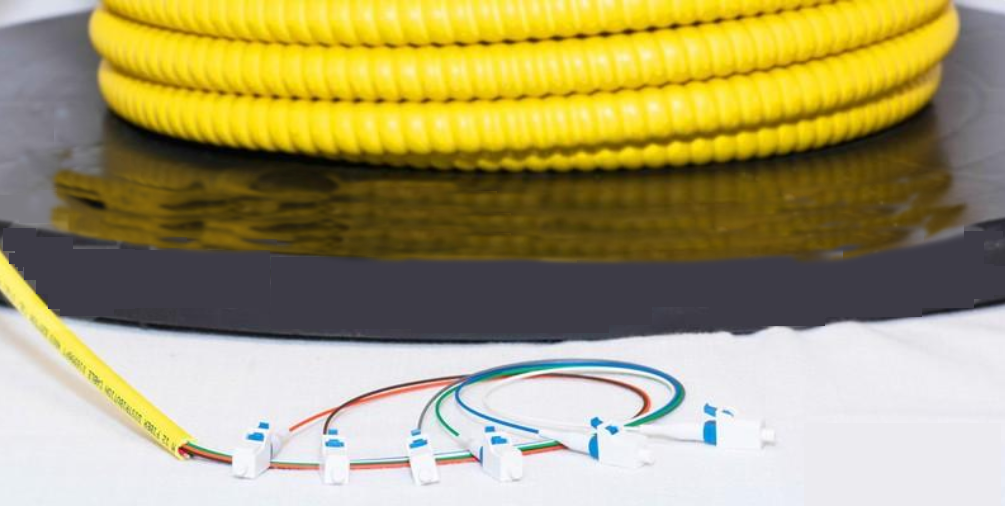
The Structure of Armored Fiber Optic Cable
- Outer jacket: In the design of armored fiber optic cable, the outer jacket can protect the fiber optic cable from the damage of solvent and abrasion, usually the outer jacket is made of plastic, such as polyethylene.
- Metal armor: between the outer casing and the inner sheath is the armor, the armor material is difficult to cut, chew and burn, also can prevent the stretching of the fiber optic cable during laying. As shown in the figure below, the 12-core armored fiber optic cable has 12 optical fibers and inner and outer sheaths, and the metal armor is located between the inner and outer sheaths, and there is a layer of aramid yarn between the outer sheath and the metal armor.
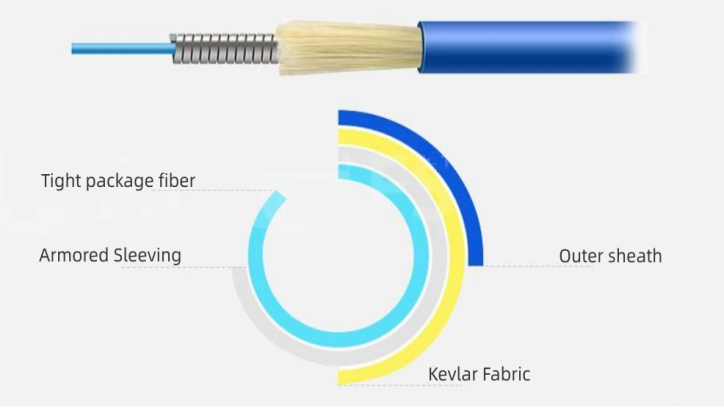
- Inner sheath: It is a protective and flame-retardant material that supports the internal fiber optic cable bundle. In simple terms, in an armored fiber optic cable, the buffer pipe surrounds a layer of aramid yarn, a layer of polyethylene jacket, and a layer of corrugated steel armor.
Armored Type
Armored fiber optic cable can be divided into indoor armored fiber optic cable and outdoor armored fiber optic cable according to the application of fiber optic cable. In addition, armored fiber optic cable can be divided into interlocked armored fiber optic cable and corrugated armored fiber optic cable according to the different types of metal armor.
Indoor armored fiber optic cable: indoor armored fiber optic cable includes single-layer armored and double-layer armored fiber optic cable. The double-layer armored cables are used in shallow near-shore waters, while single-layer armored cables are used in applications other than these extreme conditions.
Outdoor armored fiber optic cable: Outdoor armored fiber optic cable can be divided into lightly armored fiber optic cable and heavily armored fiber optic cable. Usually heavily armored cable is used for river bottom and submarines, so the price of lightly armored cable is cheaper than heavily armored cable.
Interlocking armored fiber optic cable: Interlocking armored is a spiral-wound fiber optic cable with aluminum armor, commonly used in indoor and outdoor general environment, with high durability and high compression resistance.
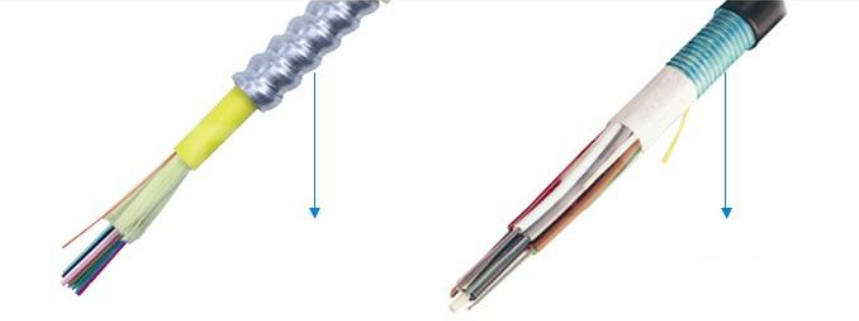
Corrugated armored fiber optic cable: Corrugated armored is a longitudinal pleating of fiber optic cable wrapped with steel tape, commonly used in outdoor environments, with superb mechanical properties and provides protection against gnawing by rodents.
Application of Armored Fiber Optic Cable
According to the laying environment, armored fiber optic cable can be divided into tightly armored and loosely armored fiber optic cable. Loose armored cables are usually used in outdoor applications; tightly armored cables can be used in indoor applications and indoor/outdoor applications.
The following diagram shows the structure of indoor armored fiber optic cable, the metal armor is interlocking armor, and the sheath can be riser type or low smoke and halogen-free type.
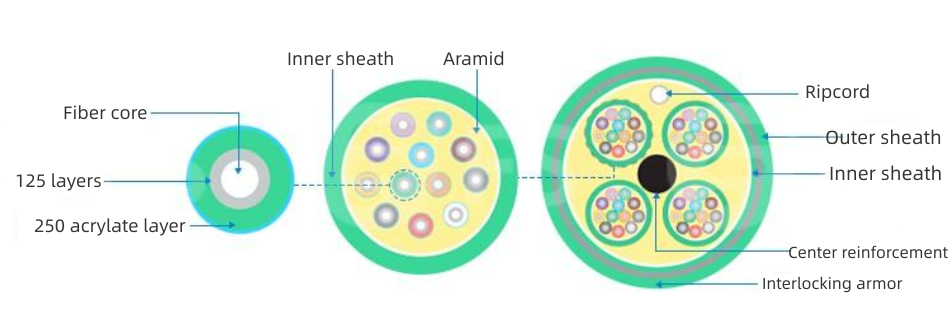
Indoor/outdoor armored fiber optic cables are widely used in modern telecommunication networks and are the link between two or more building networks, the following diagram shows the internal structure of common multi-core indoor/outdoor armored fiber optic cables.
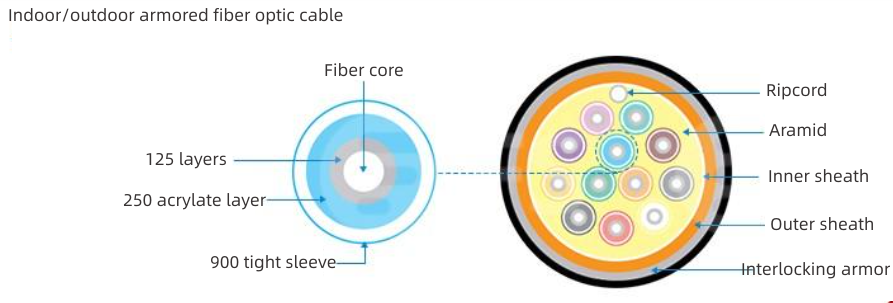
Outdoor armored fiber optic cable uses corrugated armor, which is highly tensile, highly compressive and rat bite resistant. The following diagram shows the internal structure of outdoor armored fiber optic cable.

Conclusion
In the field of modern fiber optic communication, any fiber optic failure may cause significant financial and material losses, so protecting the fiber optic is the top priority in the installation process of a fiber optic communication system. The armored fiber optic cable with a protective “armor” wrapped around the outside of the fiber meets the requirements of rodent bite, moisture and tensile resistance.
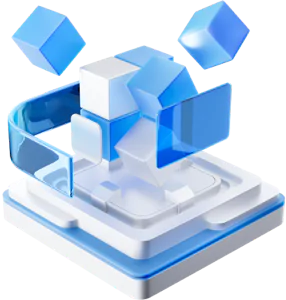
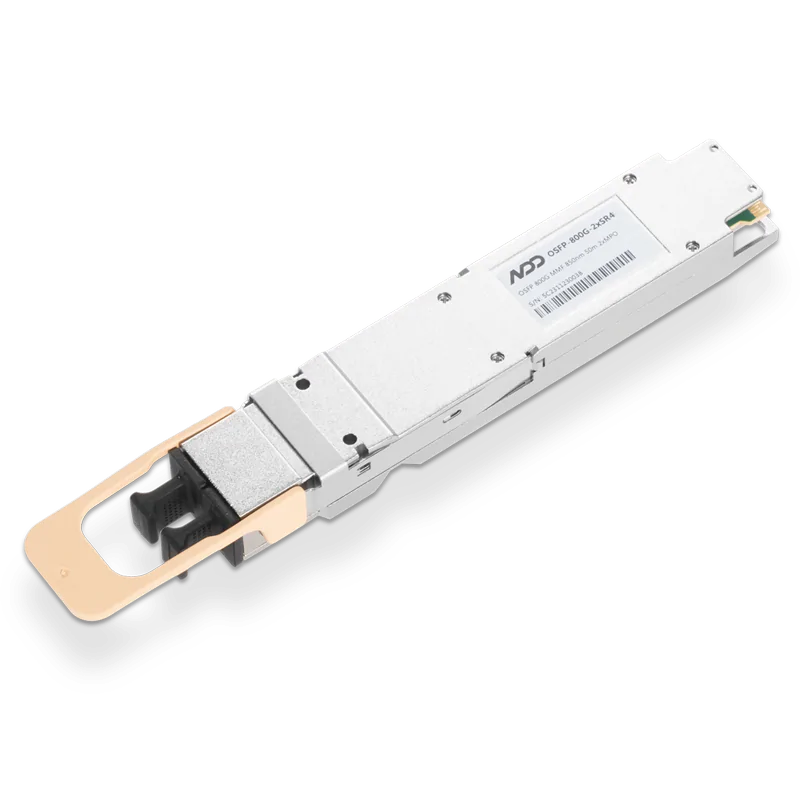 800GBASE-2xSR4 OSFP PAM4 850nm 50m MMF Module
800GBASE-2xSR4 OSFP PAM4 850nm 50m MMF Module- 1How Does Transceiver Forward Error Correction (FEC) Work?
- 2What Are Fiber Optic Cables and Pigtails?
- 3400G Solutions Changes High-Bandwidth DCI Architecture
- 4OFC 2025 Recap: Key Innovations Driving Optical Networking Forward
- 5NADDOD 1.6T XDR Infiniband Module: Proven Compatibility with NVIDIA Quantum-X800 Switch























